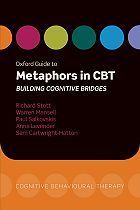Brings together in one place hundreds of tried and tested metaphors that have been used to great success by therapists throughout the world. Shows the reader how and when metaphors can be used, helping them to understand when to introduce metaphors within their interactions with clients. Accessibly written, with many illustrations to help the reader understand the potential power of metaphors within CBT.
The business of cognitive therapy is to transform meanings. What better way to achieve this than through a metaphor? Metaphors straddle two different domains at once, providing a conceptual bridge from a problematic interpretation to a fresh new perspective that can cast one’s experiences in a new light. Even the simplest metaphor can be used again and again with different clients, yet still achieve the desired effect. One such example is the ‘broken leg’ metaphor for depression. Clients with depression are understandably frustrated with their symptoms. They may often push themselves to get better or tell themselves that they should be better by now. As a therapist, it is fair to ask, would the client be so harsh and demanding on herself after getting a broken leg? A broken leg needs time to heal and you need to begin to walk on it gradually as it builds up in strength. You can’t run before you can walk”, and if you try, you are likely to make it worse. For many clients this simple metaphor is enlightening, changing their view of their symptoms as a sign of their own laziness and worthlessness, to a view of them as part of an understandable illness, that while open to improvement, cannot get better over night.


Reviews
There are no reviews yet.